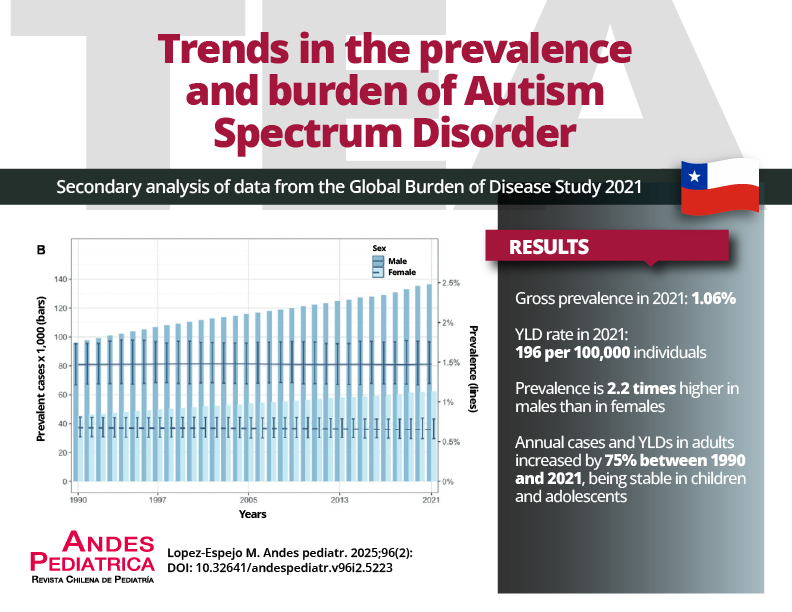Abstract
The autism spectrum disorder (ASD) prevalence has increased in many countries. However, studies on ASD health indicators in Chile are limited.
Objective: To estimate ASD prevalence and years lived with disability (YLDs) in Chile in 2021, stratified by sex and age, and to analyze trends from 1990 to 2021.
Material and Method: A secondary analysis of the data from Global Burden of Disease Study 2021 was performed. Non-linear trends were evaluated by estimating the average annual percentage change (AAPC).
Results: In 2021, the crude prevalence and YLDs rate of ASD in Chile were 1.06% (95% CI 0.88-1.25) and 196 (95% CI 135-280) per 100,000 people, respectively. The prevalence was 2.2 times higher in males (1.47%; 95% CI 1.23-1.76) than in females (0.65%; 95% CI 0.54-0.78). Annual cases and YLDs in adults increased by approximately 75% from 1990 to 2021, while annual cases and YLDs in children and adolescents remained stable. Trend analysis revealed a slight annual increase in overall prevalence and in prevalence among children and adolescents (AAPC 0.03% and 0.05%, respectively) and an annual decrease in prevalence among females (AAPC -0.11%). Trends in YLDs rates were closely related to prevalence. No other significant changes were observed.
Conclusions: ASD prevalence in Chile in 2021 was higher in males than in females, with no significant age-related differences. Although overall and age-specific prevalence rates appear to be stable, the increase in total adult cases indicates a growing ASD burden in Chile. Further research is needed to identify underlying factors and address potential barriers to diagnosis and access to care.

This work is licensed under a Creative Commons Attribution 4.0 International License.
Copyright (c) 2025 Revista Chilena de Pediatría






